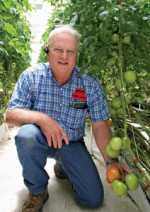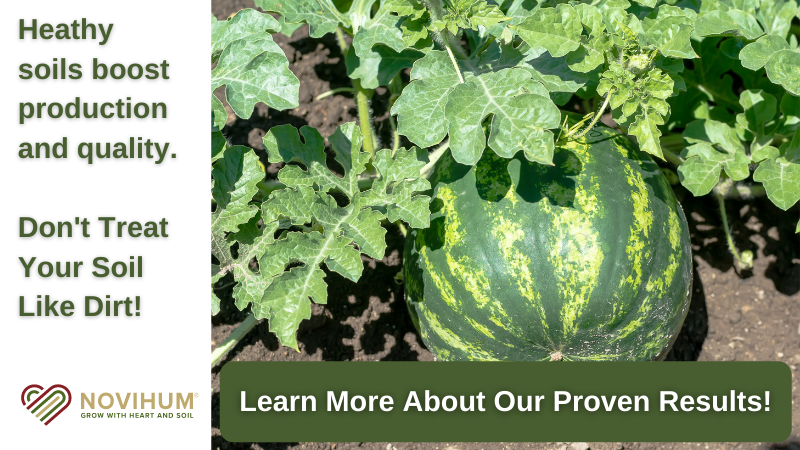How Hydroponics Helped


The Jopsons had been farming dry land grains and raising cattle on their ranch north of Sacramento, CA, since the late 1800s, so it was quite a change when Tom, his father, and his brother Dave decided to start growing greenhouse tomatoes. About 20 years ago, Tom Jopson read an article on greenhouse production, and the more he read, the more intrigued he became. Besides, the family, which by then was largely growing rice, didn’t want to depend on government subsidies any more. “We got tired of farming the government,” is how Tom puts it. “The government doesn’t make a very good business partner. You can see that today.”
In 1991, he, his father, and Dave headed back to Ohio for a seminar at CropKing, which specializes in hydroponics and controlled environment growing systems. After more research, including a survey of what tomatoes were readily available to consumers, the family was convinced they had a market. “Most people do not know what a good tomato is,” says Tom. And they intended to rectify the situation.
They built two bays, each 30 feet wide and 96 feet long, and planted their first crop. The only problem was that it wasn’t quite so simple as they thought. “The first year was a failure,” says Tom, who was then asked what went wrong. “Everything,” he replied.
Get Expert Help
Perhaps their biggest mistake is that they retained the same crop consultant they’d always used. The man was excellent when it came to rice and other field crops, but he had no experience when it came to greenhouse tomatoes. On the initial crop, the first three clusters developed a severe case of blossom-end rot, and were not marketable. So they contacted experts, including such companies as Hydro-Gardens of Colorado Springs, CO, and American Hydroponics of Arcata, CA, and they provided invaluable assistance. But things really took off when they met Merle Jensen.
Now a professor emeritus at the University of Arizona’s Controlled Environment Agriculture Center, Jensen, who is also a longtime contributor to American Vegetable Grower, recommended some subtle changes to the Jopsons’ fertilization system. Subtle, but when it comes to fertilizers, any change is critical in hydroponics because there’s no soil to supplement. Pretty much all the plants get is provided by the grower.
Like most novice growers, the Jopsons bought premixed fertilizers. Nothing wrong with that, in fact Tom would recommend the approach to anyone starting out. But to further save money, suppliers used cheaper grades of fertilizer, and that left sediment in the bottom of the tank. Jensen provided a recipe that, among other things called for higher grades of fertilizer, which further improved the quality of Jopson’s tomatoes. Jensen also provided something intangible that has proved equally important. “He really taught us to read the plants,” says Jopson. “They will tell you what they need and when they need it.”
The Jopsons have since learned that caring for their plants extends to other senses as well, if you take the time to pick it up. For example, powdery mildew is always a threat, but they used to really struggle with it. In fact, 10 years ago they came dangerously close to losing all their plants to the fungal disease. But through years of experience and paying close scrutiny to their plants — practically living in the greenhouse — those days are long gone. “My brother and I can walk through and tell immediately if there’s powdery mildew — we can actually smell it,” says Tom. “We can’t smell the tomatoes any more, but we can smell powdery mildew.”
Real Tomato Flavor
Today the Jopson brothers and their wives, along with five employees, produce premium greenhouse tomatoes — they retail for more than $4 a pound — a little more than nine months a year. They cease harvest in July when the market is flooded with homegrown tomatoes and don’t start up again until September. Next year however, for the first time, they plan to grow tomatoes outside during the summer to bridge the gap. Tom says it’s possible for them to do because it’s so much more inexpensive to grow tomatoes outside. Does that mean he cuts prices to compete? “We’ve never lowered our price,” he says. “Once you lower your price, it’s tough to bring it back up. But with the recent economic developments, we may have to re-think that.”
But the focus is still on hydroponics. They have two greenhouses, one 11,520 square feet and the other 17,280 square feet. Tom declines to reveal his yields, but when told that people might be curious as to what kinds of yields he’s getting, he replies, “Let me put it this way: We produce four times what a field grower can do in the same area.”
They’ve also diversified, supplying many of the 45 to 50 stores where they deliver tomatoes with “living basil” plants as well. The basil plants, which retail for $2.99, can supply a home with fresh basil for up to three months if fed and freshly watered each week. Sales haven’t taken off yet, providing the diversification that they’d originally sought, but that doesn’t mean they’re considering any other crops.
Tom Jopson says their stock-and-trade is quality — his tomatoes are always the highest-priced tomatoes in the store, he notes with a hint of pride — and producing top-quality tomatoes takes careful attention. But it’s worth it, especially today as most Americans have become disconnected from their agricultural heritage. “School kids think milk comes from a grocery store,” he says. “So how could they know what real tomatoes taste like?”
Energy Costs: The Game Changer
While hydroponic farming has always been challenging, it’s become even more so over the past year as energy costs have skyrocketed. All growers have taken a serious hit because farming is so energy-dependent, not to mention the related soaring costs of fertilizer and other inputs. But greenhouse grower Tom Jopson says that with greenhouses, because of all the necessary heating, cooling, and lighting, energy eats up even more of the operating budget. “My profit margin has shrunk considerably in the past year,” he says with a sigh.
For example, Jopson uses about 37,000 gallons of propane a year. Six years ago, he filled up his propane tank for 46¢ a gallon. Now it’s more than $2 a gallon. Freight costs too have jumped, a big expense because many of his supplies — such as the tomato plants he sources from Canada — come from quite a distance away. It’s gotten to the point that the freight costs on the cocoa-fiber, or coir, grow bags he uses to anchor the tomato plants’ roots are now about equal to the costs of the grow bags themselves. “Nobody includes the cost of freight any more,” he says. “And not only is there a freight bill, but there’s an added fuel surcharge of up to 18%.”
And the hits just keep on coming. His electric utility recently hiked the cost of electricity by 5%. And the company has announced that come January, the cost will go up an additional 10% to 12%. “And we don’t have any big ways to cut energy use,” says Jopson. “We’re running temperatures as close to the minimums and maximums as we can, but it takes a certain amount of energy to grow a pound of tomatoes.”
Jopson’s tried to pass on some of the costs to buyers, which caused some supermarkets to raise the retail price on his premium tomatoes from $3.99 to $4.29 a pound. “I did one price increase and that’s it,” he says, adding that the buyers made it clear any further increase would be unacceptable.








